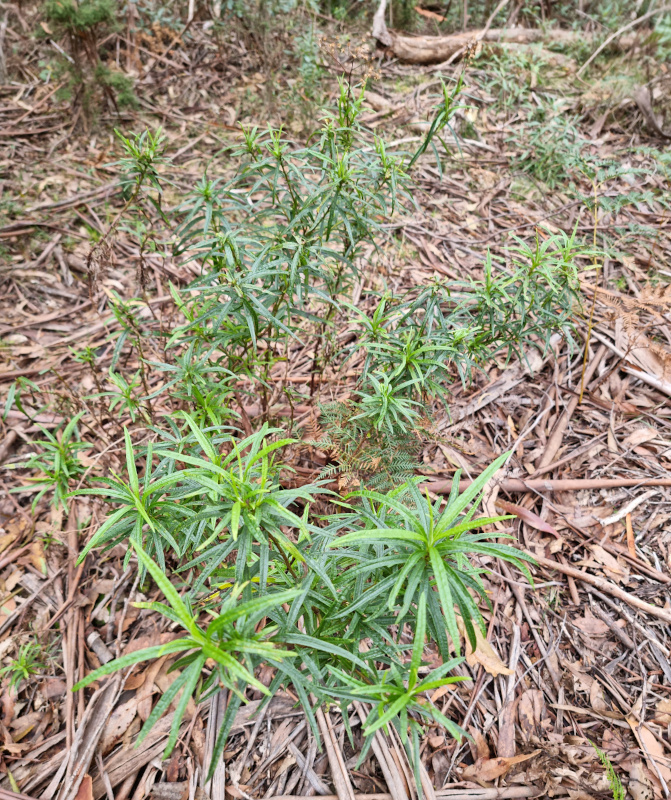We’ve decided to undertake a survey of all the plants on our farm. Our very first offering is Senecio Linearifolius, in the family Asteraceae, whose common name is Fireweed Groundsell. Senecio is from the Latin senex, meaning old man. This nomenclature probably refers to the white, fluffy, bearded seeds (Senecio Linearifolius – https://www.nzpcn.org.nz/flora/species/senecio-linearifolius/).

Senecio is one of the largest genus of flowering plants with about 1500 species worldwide (Beech Trail Track Notes – https://anareskiclub.org/wp-content/uploads/2018/07/beech-trail-track-notes.pdf).
A native of Tasmania, it is a fragrant (smells bitter and astringent to me) shrubby perennial which grows to 2 metres in height. It has yellow flowers which grow in a cluster, known as a corymb, wherein the outermost flowers grow longer stems than the inner ones so that the flowers grow all on the same level. The seeds are spread by the wind.
It is widespread throughout Tasmania especially in high rainfall areas. In the United States it is considered an invasive weed (Senecio linearifolius Risk Assessment – https://www.cal-ipc.org/plants/risk/senecio-linearifolius-risk/).

This plant contains pyrrlizidine alkaloids making it poisonous to horses and cattle, who suffer from seneciosis, damage to the liver, kidneys and lungs. There is no effective treatment. Poisoning of horses in Tasmania was called Waratah horse disease, after the area it occurred in (Dickinson CG (1930) Waratah horse disease. Aust. Vet. J. 6:65-67). Sheep are less susceptible to it and will eat it and goats eat it with no troubles. These alkaloids cause veno-occlusive disease in humans (Toxology for Australian veterinarians- https://aapspextranet.animalhealthaustralia.com.au/wp-content/uploads/2019/04/tav7_3_alkaloids_pt1-1.pdf).
Further reading:
Thompson IR (2004b) Taxonomic studies of Australian Senecio (Asteraceae): 2. the shrubby, discoid species and the allied radiate species Senecio linearifolius. Muelleria 20, 67–110.
